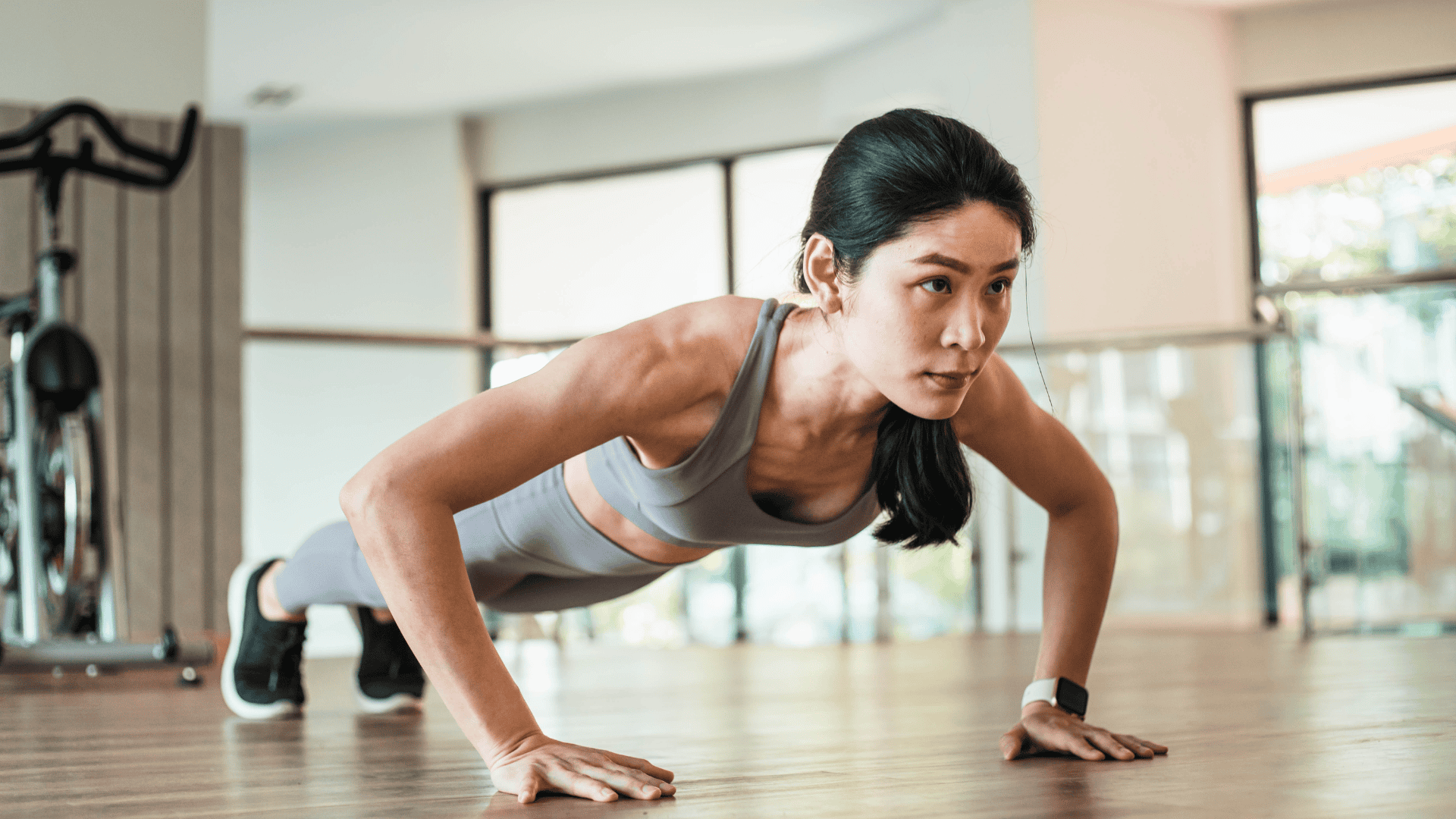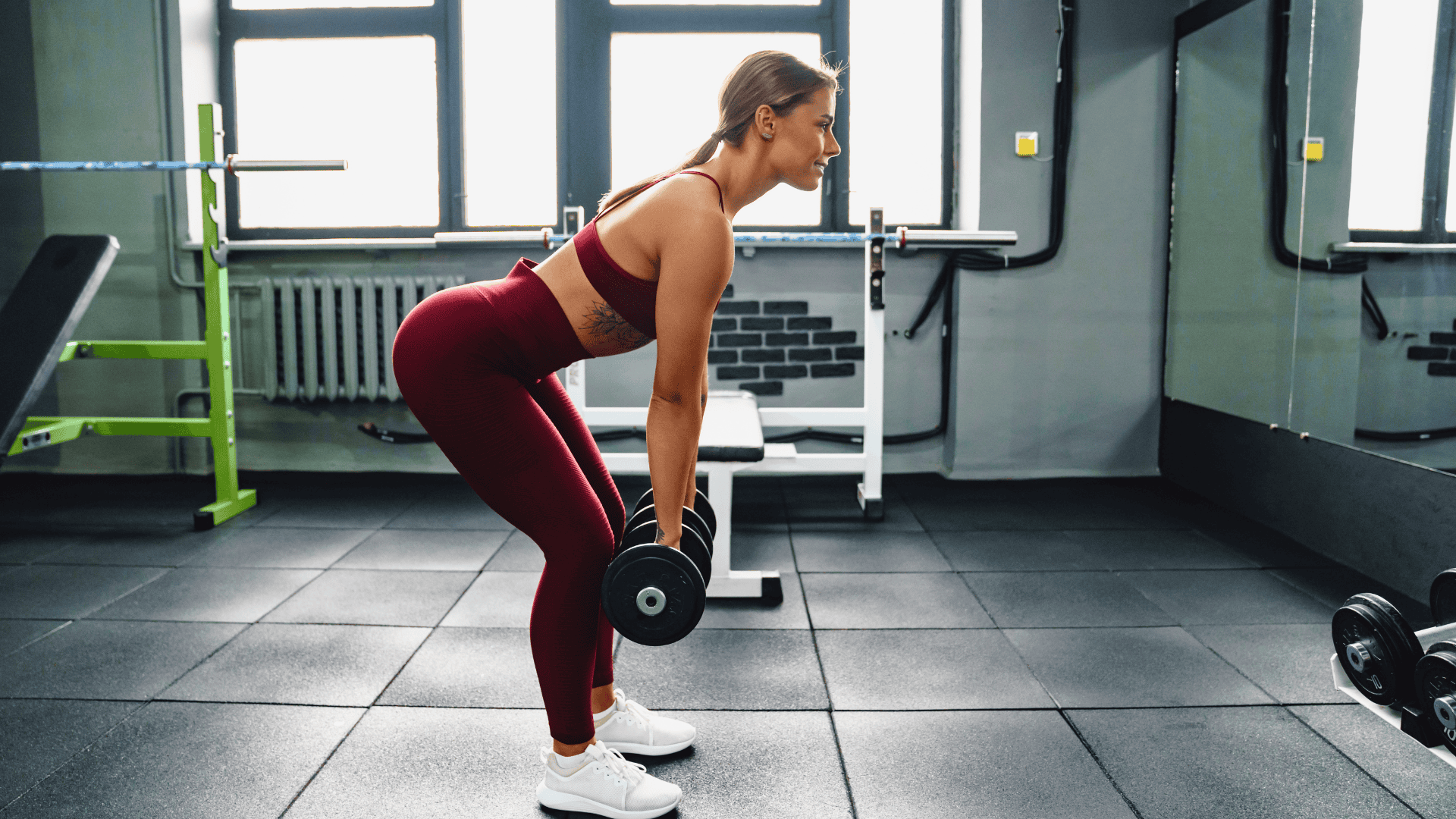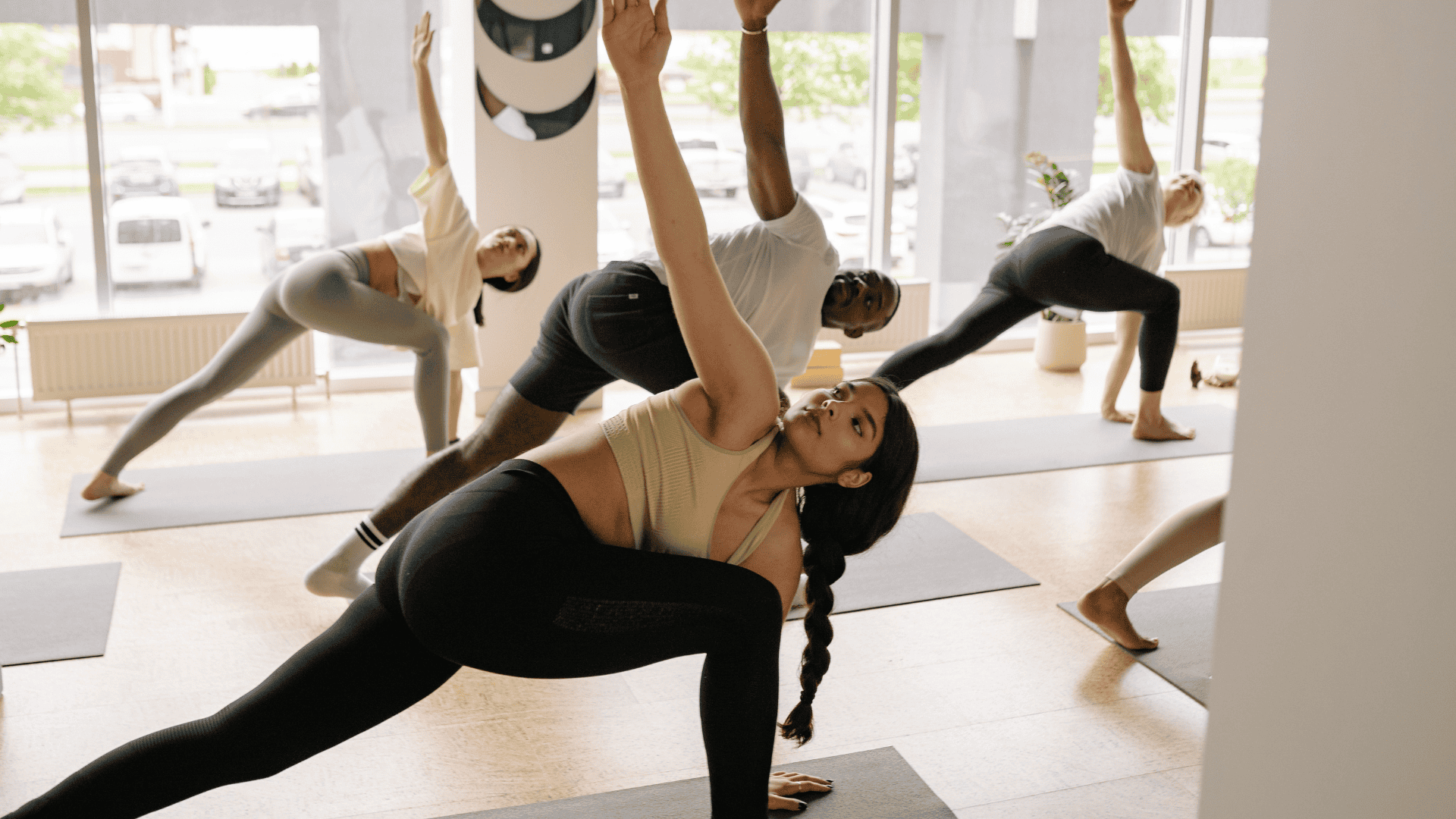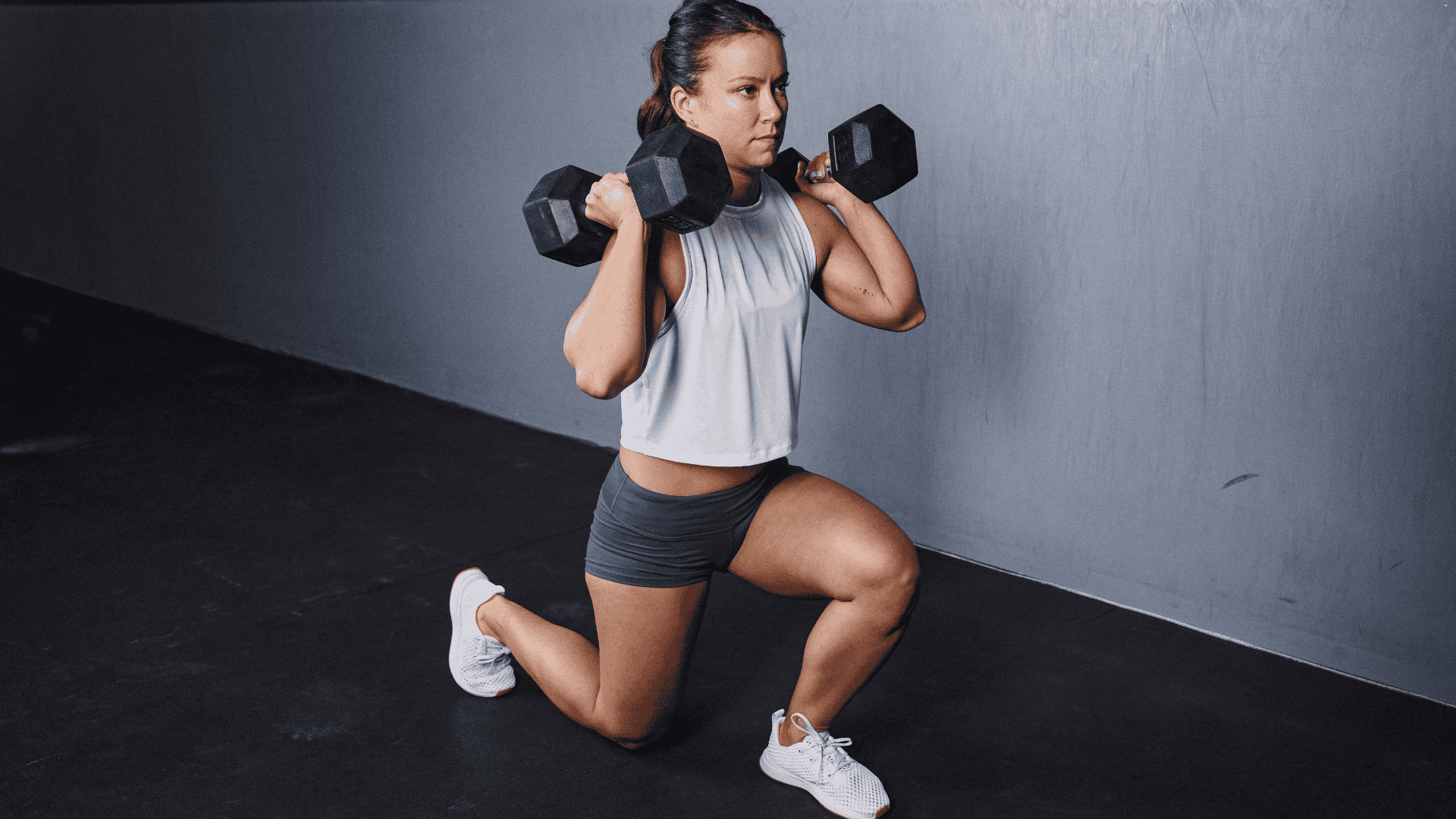Ever walk into the gym, look around, and wonder where to even start? You’re not alone. A lot of people want to get in, get sweaty, and get out, but without spending hours on a treadmill or guessing their way through a weight machine jungle.
That’s where HIIT comes in. HIIT stands for High Intensity Interval Training. It just means doing short bursts of hard work, followed by short breaks.
Simple, right?
And what make this great is IT WORKS.
You burn calories, build strength, and stay focused, all in less time than it takes to scroll through your feed.
At the gym, HIIT gets even better. You have more space, better equipment, and fewer distractions. And no, you don’t have to lift like a powerlifter or sprint like an Olympian to see results. You just need a plan that fits your body and your time.
This article will help you build one.
What Makes HIIT Work So Well at the Gym
HIIT already works because it keeps things simple: short bursts of work, short breaks, and just enough sweat to remind you you’re alive.
But doing it at the gym? That’s where it really works better.
Why? Simple, because in a gym, you have more space, better equipment, and zero risk of kicking over your laundry basket during a squat jump. (true story) Machines like treadmills, rowers, and battle ropes let you mix things up without making it complicated.
Compared to at-home HIIT, gym workouts give you more ways to challenge your strength and endurance. At home, you’re often limited to bodyweight moves. At the gym, you can grab a kettlebell, hop on the stair climber, or use a bench for elevated pushups.
Same concept, but you definitely have MORE options.
So if you’re someone who gets bored fast or wants a little more structure in your workout, gym-based HIIT makes it easier to stay on track and actually enjoy the grind.
How to Prepare for HIIT Workouts at the Gym (Warm-Up & Setup)
Before you jump into any HIIT workout, let’s make sure you’re actually ready to move. Because showing up is great, but being prepared?
That’s what makes it count.
First, do a quick gear check. Wear shoes that give your feet support and won’t slip around. Bring a water bottle because you will get thirsty (probably fast). And have something to track your time, a phone app, a timer watch, or even just the gym clock works.
Next, warm up. This part matters more than most people think.
A short warm-up gets your muscles loose, your heart rate up, and your body ready to move. Try this: march in place, do arm circles, walk briskly on the treadmill, or do a few slow bodyweight squats.
(Two to three minutes is all you need)
Lastly, check your mindset. You’re not here to punish yourself, you’re here to get stronger. You don’t have to go all-out every second.
Progress means showing up, moving well, and getting a little better every time. That’s it.
HIIT Workouts at the Gym You Can Actually Stick To
Some workouts are so complicated, they feel like homework. (You don’t need that)
What you need is something simple you can actually stick with. These HIIT routines are quick, easy to follow, and work with whatever time or energy you’ve got.
You’ll find three types below, pick the one that fits your mood, your body, or even how busy the gym is.
A. Full-Body HIIT (No Machines Needed)

This routine uses just your bodyweight and maybe a pair of dumbbells. It’s great if the gym is packed or you don’t feel like waiting around for a machine.
- Do each move for 30 seconds
- Rest for 15 to 30 seconds between moves
- Repeat the circuit 2 to 3 times
Try this combo:
- Jump squats
- Push-ups
- Dumbbell deadlifts
- Mountain climbers
- Plank hold
- Reverse lunges
You’ll hit every major muscle group and keep your heart rate up the whole time.
B. HIIT with Gym Equipment
When machines are free, use them. These moves are great if you love cardio but want it to feel less like a slow grind.
Try this setup:
- Treadmill: Sprint 30 seconds, walk 30 seconds × 5 rounds
- Rowing machine: Row hard for 20 seconds, easy pace for 40 seconds × 5 rounds
- Battle ropes: Slam for 20 seconds, rest 20 seconds × 5 rounds
- Bike: Pedal hard for 30 seconds, coast for 30 seconds × 5 rounds
Do 2 rounds of the full list with a 1-minute break in between.
You’ll sweat. You’ll breathe heavy. But it’s over before your playlist even ends.
C. Strength-Focused HIIT

If your goal is to tone up and get stronger, not just burn calories, this one’s for you. You’ll still move fast, but the focus is on form and lifting with control.
Here’s a sample round:
- Dumbbell squats
- Kettlebell swings
- Push press
- Renegade rows
- Russian twists
- Deadlifts
Do each move for 30–40 seconds, rest for 20–30 seconds, and repeat the round 2 to 3 times.
This mix gives you strength, cardio, and stamina in one tight routine. Plus, you’ll feel like a beast without needing to spend hours working out in the gym.
A Sample HIIT Workout at the Gym You Can Try Today

If you’re not sure where to start, this full-body HIIT routine gives you a simple plan to follow. It doesn’t need machines, but you’ll get the sweat and strength you came for.
You can do it in a corner of the gym with just a pair of dumbbells.
Workout Details
- Rounds: 3
- Work: 30 seconds per move
- Rest: 15–30 seconds between moves
- Break: 1-minute rest after each full round
HIIT Workout Plan Table
| Move | Time | Notes |
| Jump Squats | 30 sec | Land soft, keep chest up |
| Push-Ups | 30 sec | Drop to knees if needed |
| Dumbbell Deadlifts | 30 sec | Use light to medium weight |
| Mountain Climbers | 30 sec | Keep back flat and move fast |
| Plank with Shoulder Taps | 30 sec | Tap slow and steady, don’t rock your hips |
| Reverse Lunges | 30 sec | Alternate legs, step back with control |
⏱ Rest 1 minute, then repeat the full round 2 more times.
This HIIT workout at the gym is quick, effective, and easy to fit into any schedule. If you’re feeling good, bump up the weight or add one more round next time.
4 HIIT Mistakes to Avoid at the Gym

When you’re doing a HIIT workout at the gym, a solid plan is important, but so is knowing what not to do. These common mistakes can slow your progress or even cause injury.
The good news? They’re easy to fix once you spot them.
1. Skipping the Warm-Up
Jumping straight into high-intensity moves without warming up is like stepping on the gas with a cold engine. Your body isn’t ready, and you’re more likely to tweak something.
Just 3 minutes of light movement, like walking, arm swings, or squats, can wake up your muscles and help you move better.
2. Going Too Hard, Too Soon
It’s easy to think HIIT means going all-out every second. But if you start too fast, you’ll burn out quick or feel too sore to come back.
Start at a pace that feels strong but doable. You can always level up later.
3. Lifting Too Heavy With Bad Form
HIIT is fast, but that doesn’t mean you rush through your reps. Using weights that are too heavy can mess with your form and lead to injury.
Choose a weight you can move with control. If your form starts slipping, drop the weight or slow down.
4. Ignoring Rest Days
HIIT is intense, your body needs time to recover. If you go hard every day without breaks, you’re more likely to feel tired, sore, and frustrated.
Try 2 to 3 HIIT sessions per week and use the other days for rest or low-impact movement like walking or stretching.
Avoiding these mistakes will help you get more out of your workouts and keep your body happy while you do it.
How to Stay on Track Without Burning Out

HIIT workouts at the gym are great because they don’t take long, but they do take effort. And if you push too hard, too often, you’ll start feeling more wiped out than strong.
The goal is to build a routine that challenges you, but also lets you stick with it long-term.
How Often Should You Do HIIT?
If you’re doing HIIT right, you shouldn’t need to do it every day.
Two to three sessions a week is enough for most people. On the other days, you can do light cardio, strength training, or just rest. If you’re new to HIIT, start with one or two days and see how your body responds.
You want your workouts to feel tough, not impossible.
Give Your Muscles Time to Recharge
Your body doesn’t get stronger during your workout, it gets stronger after, while you’re recovering.
That’s why rest matters.
On rest days, keep it light: go for a walk, do easy morning stretches, or do a short yoga session. And don’t forget about sleep.
Try to get at least 7 hours so your muscles and mind both get the reset they need.
Real Signs You’re Getting Stronger
Not all progress shows up in the mirror or on a scale. In fact, some of the best signs you’re getting stronger happen during everyday moments—if you know what to look for.
At first, workouts might feel tough. You’ll stop often. You’ll breathe hard. But after a few sessions, things start to shift. Moves get smoother. Rest breaks get shorter.
That’s strength building whether or not anyone sees it.
Here are signs that your body is getting better at the work:
- You finish more rounds without stopping
- You catch your breath quicker between sets
- Your balance feels steadier during lunges or planks
- You don’t get winded from stairs or carrying groceries
- You show up even when you’re tired—and still get it done
These wins might seem small. But together, they mean your workouts are working. You’re not just moving, you’re making real change, one rep at a time.
Ready To Start Doing HIIT Workouts At The Gym?
Long hours and complicated routines aren’t required to see progress. HIIT makes it easier to stay consistent, push hard, and still have time for the rest of your day.
Now you’ve got everything you need; simple gear, clear moves, and a plan that fits your time and energy.
Start with one workout. Test it. Adjust if needed. Repeat.
Every small effort adds up. Show up, give what you’ve got, and stay steady. That’s how real progress happens.
This isn’t just about getting through another workout. It’s about building strength that fits your life, not the other way around.
Your time is valuable. Your effort matters.
And now, your routine finally matches both.
Tired of walking into the gym without a clear plan?

HIIT workouts are powerful, but the real progress comes when you follow a consistent schedule.
That’s exactly why I created a Free Weekly Gym Workout Plan for Women, a simple, structured guide that shows you what to do each day.
No guesswork, no wasting time scrolling for workout ideas. Just a straightforward plan that helps you burn fat, build strength, and feel confident every time you step into the gym.
Frequently Asked Questions (FAQ)
1. Can I do HIIT and weights in the same session?
Yes, you can, but keep it short and focused. Try doing your weight training first so your form stays strong, then follow with a quick HIIT finisher. For example, lift for 30 minutes, then do 10 to 15 minutes of HIIT. Just don’t overdo it. If you’re too wiped out, your body won’t recover well.
2. Is 20 minutes of gym HIIT enough?
Totally. That’s one of the best parts of HIIT, it’s fast and still effective. A solid 20-minute session with good effort and short rests can burn calories, build strength, and leave you feeling accomplished. It’s not about how long you work out. It’s about how smart you move.
3. What’s the best machine for HIIT?
Any machine that gets your heart rate up works. Treadmills, rowing machines, air bikes, and stair climbers are all great for intervals. Choose one that feels good on your body and keeps you moving. If it makes you sweat and doesn’t hurt your joints, it’s a win.
4. Can beginners do gym HIIT?
Absolutely. Just start slow. Use lighter weights, take longer rests, and do fewer rounds. As your strength builds, you can shorten the rest times or try tougher moves. HIIT isn’t just for super-fit people, it’s for anyone who wants a quick, powerful workout.
5. Should I do HIIT on an empty stomach?
That depends on your body. Some people like working out before breakfast, while others feel better after a small snack. Try both and see what works best for your energy levels. Just don’t force it, fainting mid-burpee is never the goal.










